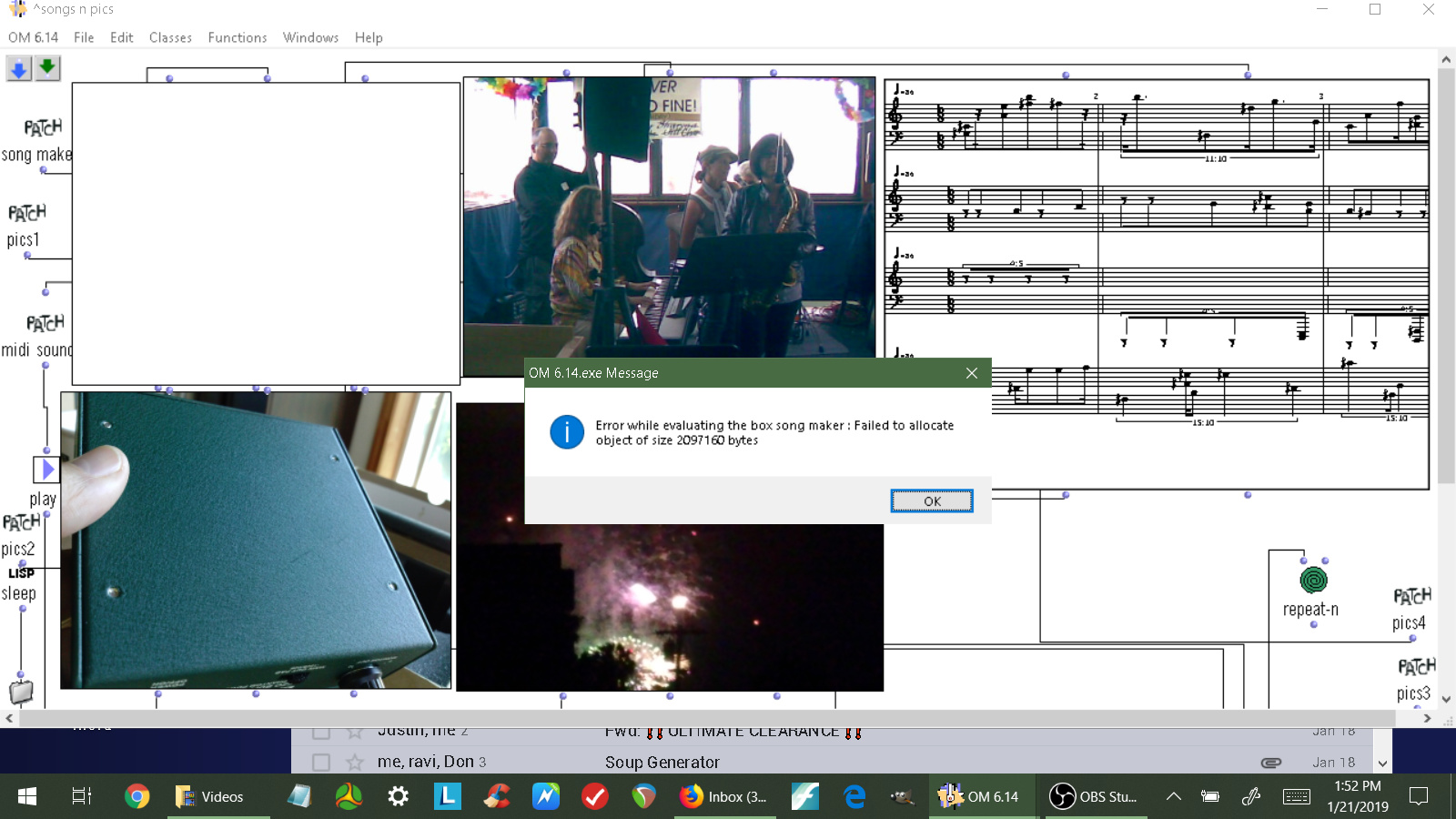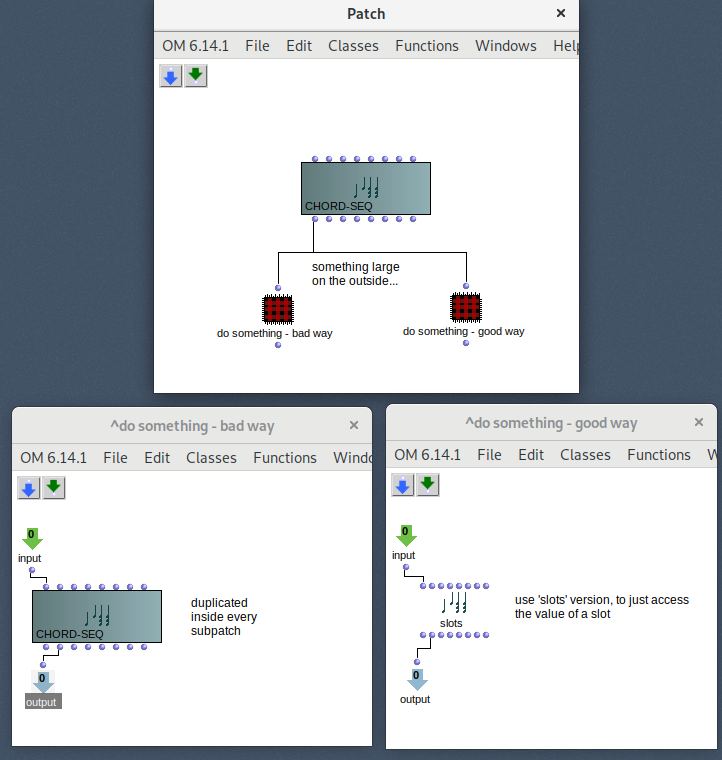Hello! Any simple tips on what I might change to avoid errors like these? They happen when I’m far enough into an OM session and I’ve already evaluated some of my patches that have “repeat-n” calls with either a high enough “n” or a sufficient number of evaluations. Even when I wait long enough for the process to terminate, there still seems to be something building up in memory. In the case of this screenshot, each evaluation is generating 5 measures of music and selecting 4 images randomly from a directory list of about 20,000 photos. If I set the “n” of the repeat-n at say 20, I can evaluate successfully a few times, but I’ll eventually get the allocation error, seemingly no matter how long I wait. I have to close the OM session to get back to normal. I can attach a patch if it helps. Thanks!


